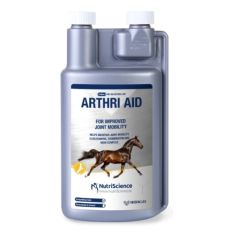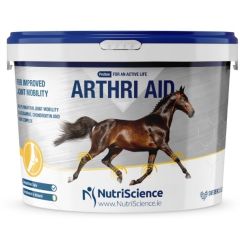How to care for your horse's joints
With the average horse weighing in around 500kg, it’s no surprise that your horse’s joints often become susceptible to wear and tear. But did you know the right care and nutrition can work wonders in easing joint issues and boosting your horse’s flexibility?
In our latest guest blog, the team at NutriScience takes a closer look at equine joints and how you can feed to manage them…

Equine joint health is a constant concern for horse owners across the world. There's a number of contributing factors which can affect each individual horse's joint health including breed, age and workload amongst others. It’s essential to manage your horse’s joints to minimise daily wear and tear and to help limit potential problems. Being proactive when it comes to joint health will help your horse to remain mobile, healthy and able to perform at their best.
Your horse's joint structure
Everyone knows a joint is the point where two or more bones meet. But it’s a little more complicated than that. Each joint comprises a number of different parts that work together, which allow the horse to move and bend in various ways.
There are three types of joints in the horse:
- synovial joints
- cartilaginous joints
- fibrous joints.
Synovial joints are the most movable and also the most susceptible to injury. Your horse has 18 of these! Within the synovial joint, where the two bones meet, the ends of each bone are covered in lubricating cartilage to allow frictionless movement and shock absorption. In the joint capsule, there is an inner lining called synovial membrane which secretes synovial fluid for further lubrication to prevent friction.
Equine joints are built to withstand the weight of the horse’s body, however when we add a rider to the equation, the situation changes. There is considerable strain put on a horse’s joints when riding so it’s understandable they need extra support. So what can we do to help?
Managing joint issues
On a daily basis, your horse’s joint cartilage is continually broken down and replacement cartilage is produced. However, this balance can be upset due to increased training, trauma, competition, or simply old age. Other contributing factors include diet, body condition, training regime and ground conditions, as well as fitness level and muscle tone.
NutriScience's top tips for healthy equine joints
Careful management of your horse’s joints will help maintain mobility and performance, here are some of our top tips:
- Promote regular exercise and movement to encourage blood flow and keep joints supple
- Get into the habit of completing an effective warm-up and cool down at exercise to avoid excess friction
- Manage your horse's weight to ensure there is no excess strain on joints
- Follow a balanced nutritional program to support natural regeneration of cartilage
Offering nutritional support
Joint supplements are developed to provide targeted nutrition which supports healthy, functioning joints and eases mobility. While not all joint problems can be prevented, supplements can help to reinforce the integrity of the joint capsule and the process of repair. Arthri Aid, from NutriScience, is a targeted supplement which aids lubrication and helps to promote regeneration of the important shock absorbing tissues of your horse’s joints. It contains the following key ingredients to ensure joint health:
- Glucosamine - an amino acid that assists in the body’s manufacture of cartilage
- Chondroitin - which assists in lubrication and shock absorption of the joints
- MSM - a naturally occurring sulphur compound which helps soothe knocks and improve joint mobility
- Hyaluronic Acid (HA) - the principle constituent of synovial fluid, nature's ‘oil for joints’
All horses are susceptible to joint issues of one kind or another and horse owners need to be mindful of this. However, with careful management and care, your horse can have healthy joints which will help his mobility, performance, and most importantly, his comfort.








